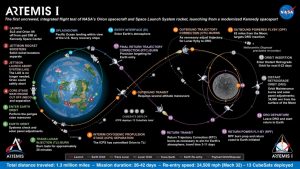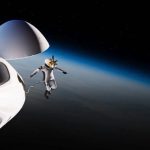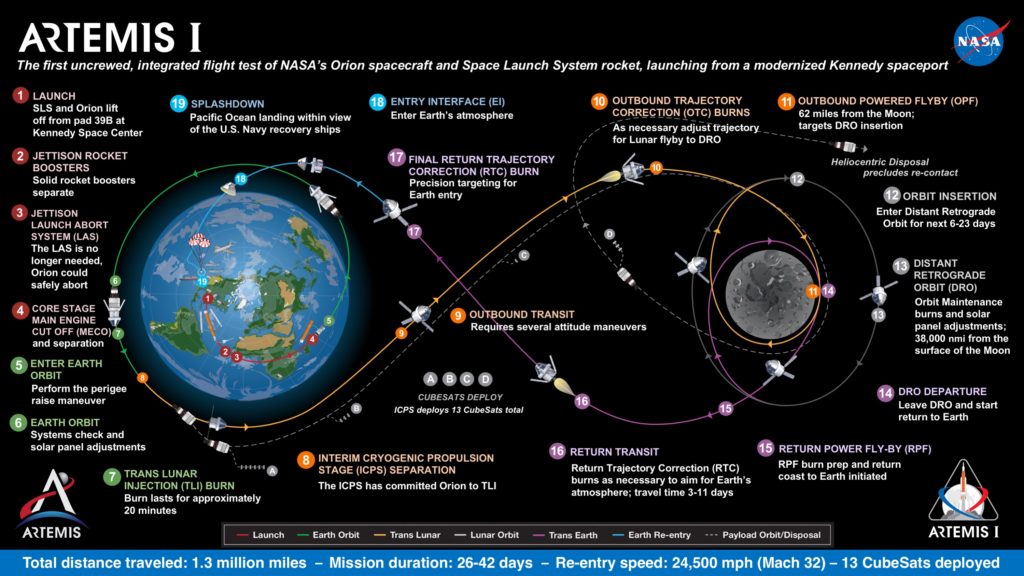NASA is committed to landing American astronauts, including the first woman and the next man, on the Moon by 2024. Through the agency’s Artemis lunar exploration program, we will use innovative new technologies and systems to explore more of the Moon than ever before. We will collaborate with our commercial and international partners to establish sustainable missions by 2028. And then we will use what we learn on and around the Moon to take the next giant leap – sending astronauts to Mars.
What is the NASA Artemis Program?
- Learn more about Artemis progress
 Why Go to the Moon?
Why Go to the Moon?
With the Artemis program we will:
- Demonstrate new technologies, capabilities, and business approaches needed for future exploration including Mars
- Establish American leadership and a strategic presence on the Moon while expanding our U.S. global economic impact
- Broaden our commercial and international partnerships
- Inspire a new generation and encourage careers in STEM
How Do We Get There?
NASA’s powerful new rocket, the Space Launch System (SLS), will send astronauts aboard the Orion spacecraft nearly a quarter million miles from Earth to lunar orbit. Astronauts will dock Orion at the Gateway and transfer to a human landing system for expeditions to the surface of the Moon. They will return to the orbital outpost to board Orion again before returning safely to Earth.
When Will We Get There?
Ahead of the human return, we will send a suite of science instruments and technology demonstrations to the lunar surface through commercial Moon deliveries beginning in 2021.
The agency will fly two missions around the Moon to test its deep space exploration systems. NASA is working toward launching Artemis I, an uncrewed flight to test the SLS and Orion spacecraft together, followed by the Artemis II mission, the first SLS and Orion test flight with crew. NASA will land astronauts on the Moon by 2024 on the Artemis III mission and about once a year thereafter.
Artemis Program


































